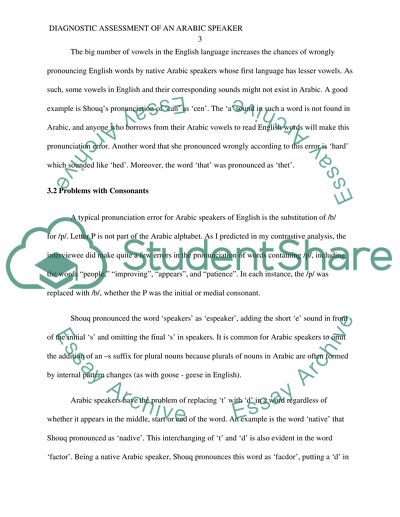Cite this document
(“Diagnostic Assessment of an Arabic Speaker Essay”, n.d.)
Diagnostic Assessment of an Arabic Speaker Essay. Retrieved from https://studentshare.org/humanitarian/1701551-diagnostic-assessment-of-an-arabic-speaker
Diagnostic Assessment of an Arabic Speaker Essay. Retrieved from https://studentshare.org/humanitarian/1701551-diagnostic-assessment-of-an-arabic-speaker
(Diagnostic Assessment of an Arabic Speaker Essay)
Diagnostic Assessment of an Arabic Speaker Essay. https://studentshare.org/humanitarian/1701551-diagnostic-assessment-of-an-arabic-speaker.
Diagnostic Assessment of an Arabic Speaker Essay. https://studentshare.org/humanitarian/1701551-diagnostic-assessment-of-an-arabic-speaker.
“Diagnostic Assessment of an Arabic Speaker Essay”, n.d. https://studentshare.org/humanitarian/1701551-diagnostic-assessment-of-an-arabic-speaker.


